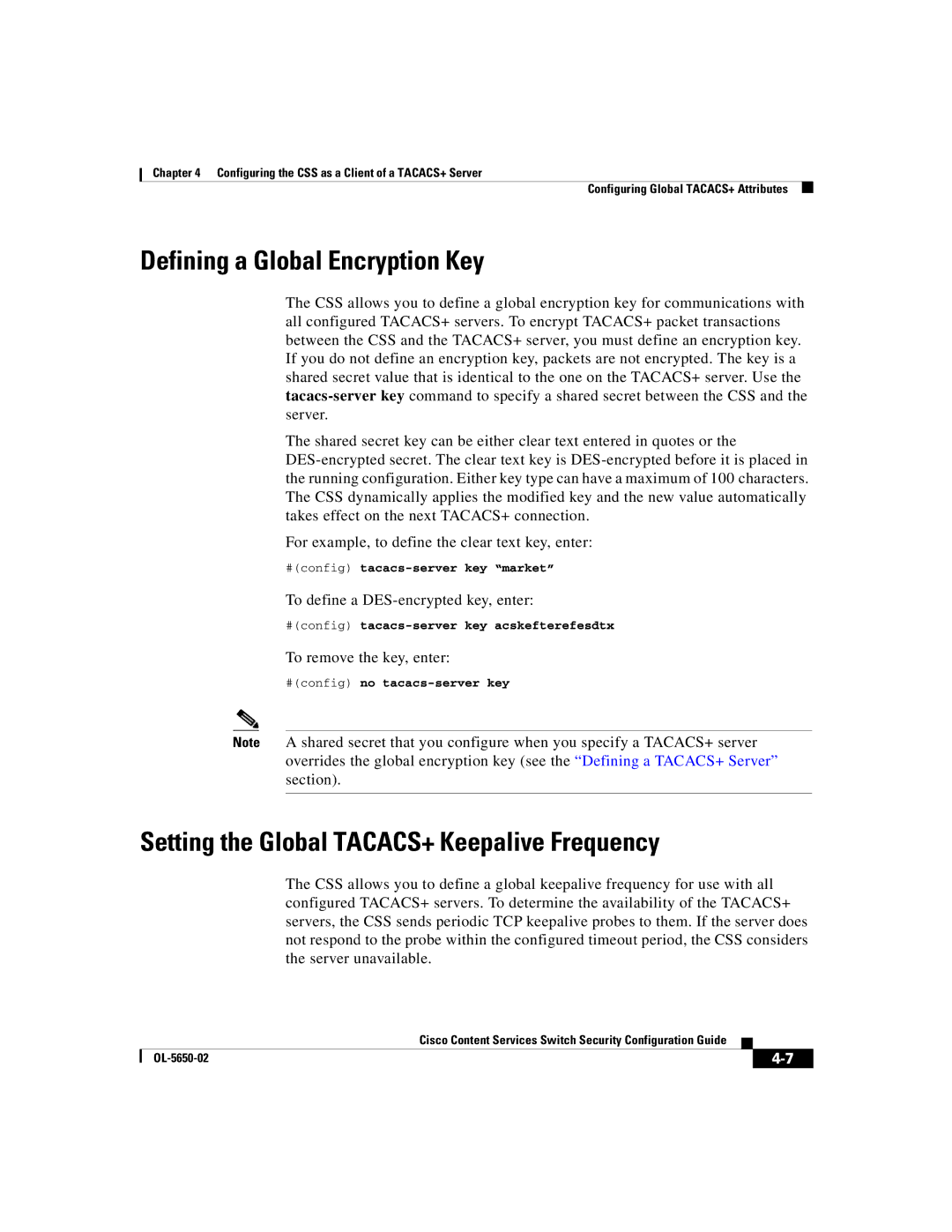
Chapter 4 Configuring the CSS as a Client of a TACACS+ Server
Configuring Global TACACS+ Attributes
Defining a Global Encryption Key
The CSS allows you to define a global encryption key for communications with all configured TACACS+ servers. To encrypt TACACS+ packet transactions between the CSS and the TACACS+ server, you must define an encryption key. If you do not define an encryption key, packets are not encrypted. The key is a shared secret value that is identical to the one on the TACACS+ server. Use the
The shared secret key can be either clear text entered in quotes or the
For example, to define the clear text key, enter:
#(config) tacacs-server key “market”
To define a
#(config) tacacs-server key acskefterefesdtx
To remove the key, enter:
#(config) no tacacs-server key
Note A shared secret that you configure when you specify a TACACS+ server overrides the global encryption key (see the “Defining a TACACS+ Server” section).
Setting the Global TACACS+ Keepalive Frequency
The CSS allows you to define a global keepalive frequency for use with all configured TACACS+ servers. To determine the availability of the TACACS+ servers, the CSS sends periodic TCP keepalive probes to them. If the server does not respond to the probe within the configured timeout period, the CSS considers the server unavailable.
|
| Cisco Content Services Switch Security Configuration Guide |
|
|
|
|
| ||
|
|
| ||
|
|
|
